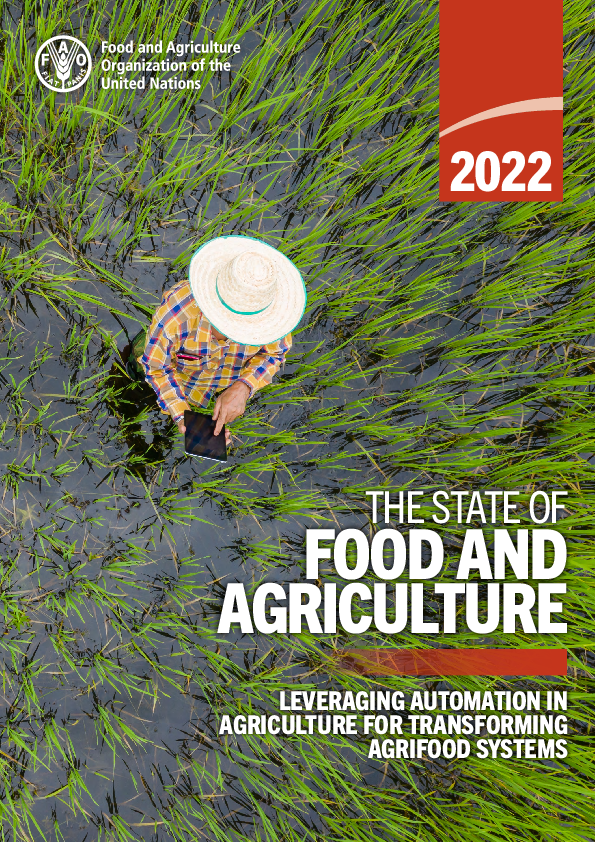- Share this article
- Subscribe to our newsletter
The State of Food and Agriculture 2022
The 2022 edition of The State of Food and Agriculture (SOFA) report looks at how automation in our agrifood systems can contribute to achieving the Sustainable Development Goals. It was published by the Food and Agriculture Organization of the United Nations (FAO) in early November. The report offers recommendations to policy makers on how to maximise benefits and minimise risks.
Agricultural automation, which includes anything from tractors to artificial intelligence, can play an important role in making food production more efficient and more environmentally friendly. However, its uneven adoption can also deepen inequalities, especially if it remains inaccessible to small-scale producers and other marginalised groups, such as youth and women.
From hire-a-tractor services in Ghana to shrimp boxes that use machine learning and robotics in Mexico, the report looks at 27 case studies from all over the world, representing technologies at different stages of readiness and appropriate to agricultural producers of different scales and levels of income.
It investigates the drivers of these technologies and identifies several barriers preventing its adoption, particularly by small-scale producers. Based on this analysis, the publication suggests policies to ensure that agricultural automation is inclusive and contributes to sustainable and resilient agrifood systems.
Finally, the report also looks at one of the most common concerns about automation – that it creates unemployment – and concludes that such fears are not borne out by historical realities.
Wide disparities in the spread of automation
Today, a new revolution is underway involving digital technologies. These include artificial intelligence, drones, robotics, sensors and global navigation satellite systems, along with the vast proliferation of hand-held devices such as mobile phones and a flurry of new devices connected to the Internet – the so-called Internet of things. Another important development involves the sharing economy. Shared asset services in Africa and Asia, for example, adopt a model similar to the Uber taxi application by allowing small- and medium-scale farmers to access costly equipment, such as a tractor, without having to buy it.
Crucially, there are wide disparities in the spread of automation between and within countries, with adoption being particularly limited in sub-Saharan Africa. For instance, already in 2005 it was estimated that Japan had more than 400 tractors per 1,000 hectares of arable land, compared with just 0.4 in Ghana.
Moreover, some technologies are still in the prototype stages, while for others a limited enabling rural infrastructure – such as connectivity and electricity – hinders their dissemination, especially in low- and middle-income countries.
It is also worth noting that certain technologies – such as large, motorised machinery – can have negative environmental impacts by contributing to monoculture and soil erosion. However, recent developments with smaller machinery are helping to overcome such problems.
(FAO/ile)
Read more and download the report on the FAO website





Add a comment
Be the First to Comment